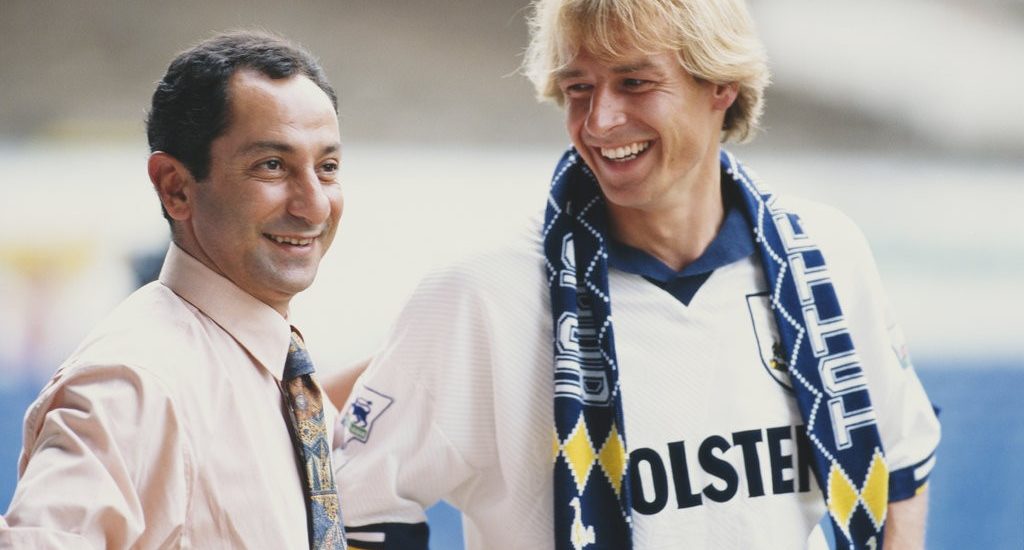- January 6, 2019
- Posted by: worldsoccerinstitute.com
- Category: Business plans

By Rory Smith | July 5, 2018 | NEW YORK TIMES
MOSCOW — In the weeks before the World Cup, a flurry of phone calls went around the recruitment departments of some of Europe’s major clubs.
Strictly speaking, the scouts who work for the superpowers of the Premier League, La Liga and the rest are rivals, but theirs is a small, intimate world. Many have relationships that go back years, independent of their current employers. They have spent months on the road together, at the same games, watching the same players. They tend to talk.
As Russia 2018 approached, then, many touched base to find out what, roughly, their peers would be doing for five weeks in June and July. By and large, the answer was the same. They had no plans for shopping in Russia.
[LIVE: Follow our coverage of Brazil vs. Belgium]
The World Cup is the planet’s most-watched sporting competition. It is soccer’s marquee event. Thousands spend fortunes to attend it, supporting their nations. It commands global television audiences of more than a billion people. Devoted fans tune in to every minute.
To soccer’s elite scouts, though, it is almost an afterthought. They will all watch it, of course, though with a personal as much as a professional eye. Some have sent staff members to Russia to take in a few games, to keep track of possible targets.
None, however, believe it will teach them anything they do not already know. They have not flocked to Samara, Saransk and Yekaterinburg in great numbers. Their summer transfer plans no longer rest on whichever player most captures the imagination this month. This is not where clubs come to find players. Not anymore.
Fans and the news media often talk about how an ascendant star at a World Cup will be rewarded not just with the praise of his nation but a subsequent high-profile move to a title contender in England, Spain, Italy or Germany. It is one of the tropes of every major summer tournament.
The clubs themselves, though, increasingly do not see it that way. “If you are waiting for the World Cup to make decisions, you’re not doing your work well enough,” said the head of recruitment at a leading Premier League team, who asked not to be identified because he was not authorized to speak about his club’s research operations.

It used to be different, of course. In the summer of 1994, the Tottenham Hotspur manager Osvaldo Ardiles held a news conference to present his new signing, a Romanian winger named Ilie Dumitrescu. He had been one of the stars of that summer’s World Cup, part of a swaggering, captivating Romania team that reached the quarterfinals in the United States.
“I liked him so much that I bought him immediately,” Ardiles said at the time, when asked how much Dumitrescu’s performances in that hot, bright summer in the United States had influenced his decision.
It felt as if that was what was happening all over the newly rich, nakedly ambitious Premier League. England had not qualified for the World Cup that year, and so — in the weeks after the tournament had finished — its clubs seemed determined to bring the World Cup to England instead. U.S.A. 1994 seemed to be treated as a sort of soccer equivalent to the home shopping network. Now, thanks to technology and a better understanding of scouting and analytics, it’s little more than a monthlong summer spectacle.
Most important, the world is much smaller than it once was. Nowhere is too exotic, too unfamiliar. Romania is not so far away. Clubs not only have much more sophisticated networks of contacts across the planet, they can now track possible targets remotely, thanks to digital platforms like Wyscout, InStat and Scout 7.
Teams and their scouts can watch nearly every game, in (almost) every league around the world, from the comfort of their own offices. Many of those computerized programs allow scouts to focus on the individual player they are interested in.
To ensure they know exactly what they are watching, leading teams have developed complex algorithms to quantify, essentially, how well a player needs to perform in Romania to be the equal of an average player in Italy. That dovetails with the work of expert analytics departments.
Crucially, they can tabulate data on any player for years. One scout estimates that his staff follows potential targets, on average, for seven years to have as complete a picture as possible of their abilities. No player at the World Cup this summer is unfamiliar. “We should know every athlete there,” one chief scout said.
The World Cup is no longer the pinnacle of the game, the highest stage the sport can offer. When trying to establish a player’s level at the World Cup, it is hard to know what, precisely, you are watching. To clubs who have tracked a player for years, there is no signal here, just noise.
“International football has a different rhythm and sometimes a different skill set to club football,” said Simon Wilson, who has worked on a number of recruitment campaigns at several Premier League teams, including Manchester City and Southampton. “It is not always the best guide.”
For most clubs, the tournaments that are most useful are much less glamorous: youth competitions across the planet, the continental championships of Asia and Africa, and North and Central America — anywhere that is likely to expand their knowledge base, and ensure they are aware of any player that might be of interest as soon as possible.
“The other issue with the World Cup is the timing,” Wilson said. “Most clubs will have identified their targets for next season long ago. They will already have much of the work done. Recruitment departments cannot afford to think one window ahead.”
Many compare it to the fashion industry: clubs cannot afford, in June and July, to be coming up with their fall lines now. Ideally, they will already be planning their summer 2019 collections.
How different it used to be.
A raft of players came to England from across the world in 1994 — not the stars of the tournament, who still saw the Premier League as something of a backwater, but seemingly anyone else English teams could get their hands on, as long as they had been on television that summer.
Newcastle United added the Swiss defender Marc Hottiger and Belgium’s Philippe Albert. Everton brought in the Nigerian forward Daniel Amokachi. Nottingham Forest signed the Dutch winger Bryan Roy, while the United States international Cobi Jones joined Coventry City.
The influx transformed England’s top flight: a league that had long been entirely stocked by British players — with a smattering of Scandinavians — was suddenly a much more diverse, cosmopolitan, exotic place. England has been unable to wean itself off its addiction to the expensive import ever since.

“We had both watched Dumitrescu play before the World Cup,” Perryman said. “We knew all about him, but we didn’t bite on him straightaway.”
In part, Perryman explained, that was because Dumitrescu was still playing in his native Romania; Spurs needed to assess him on a more familiar stage to get an accurate read on his abilities. When he shone in the United States, they made up their minds. “His performances and his goals in the World Cup pushed our decision,” Perryman said.
That is not to say, of course, that the World Cup will not have an impact on the transfer market. Analysis by 21st Club, a consulting firm that provides advice to many leading teams, has found that a goal in a World Cup historically increases a player’s price by 15 percent. Perhaps this explains, for example, Liverpool’s desire to complete a move for Nabil Fekir, the France midfielder, before the tournament started, and the preference of his current club, Lyon, to hold off until it is over.
There are always outliers, too. In 2014, Real Madrid signed James Rodriguez, the Colombian who had finished as the World Cup’s leading scorer, on the back of his success in Brazil. Doubtless, Real Madrid had been aware of him for some time, but it was the fact he had become such a big name that forced its hand. Florentino Pérez, Madrid’s president, wanted the clean-cut, good-looking superstar who had captivated the planet as a player and a brand.
And then there are the managers. “Scouts tend to follow World Cups remotely, on video,” Wilson said, “but managers and technical directors go, either as a networking opportunity, as fans, or to do work for broadcasters.”
Once there, they have an inconvenient habit of becoming infatuated with players who catch their eyes; a brief, intense summer fling.
That can complicate all of the delicate work the scouts have done. “You do sometimes have to talk them out of things when they get back,” Wilson said.
Like the fans, and the players, managers and technical directors can be swept up in the excitement and the euphoria of a World Cup. Its magic is hard to resist, when the world is watching. Apart, that is, from the scouts.

